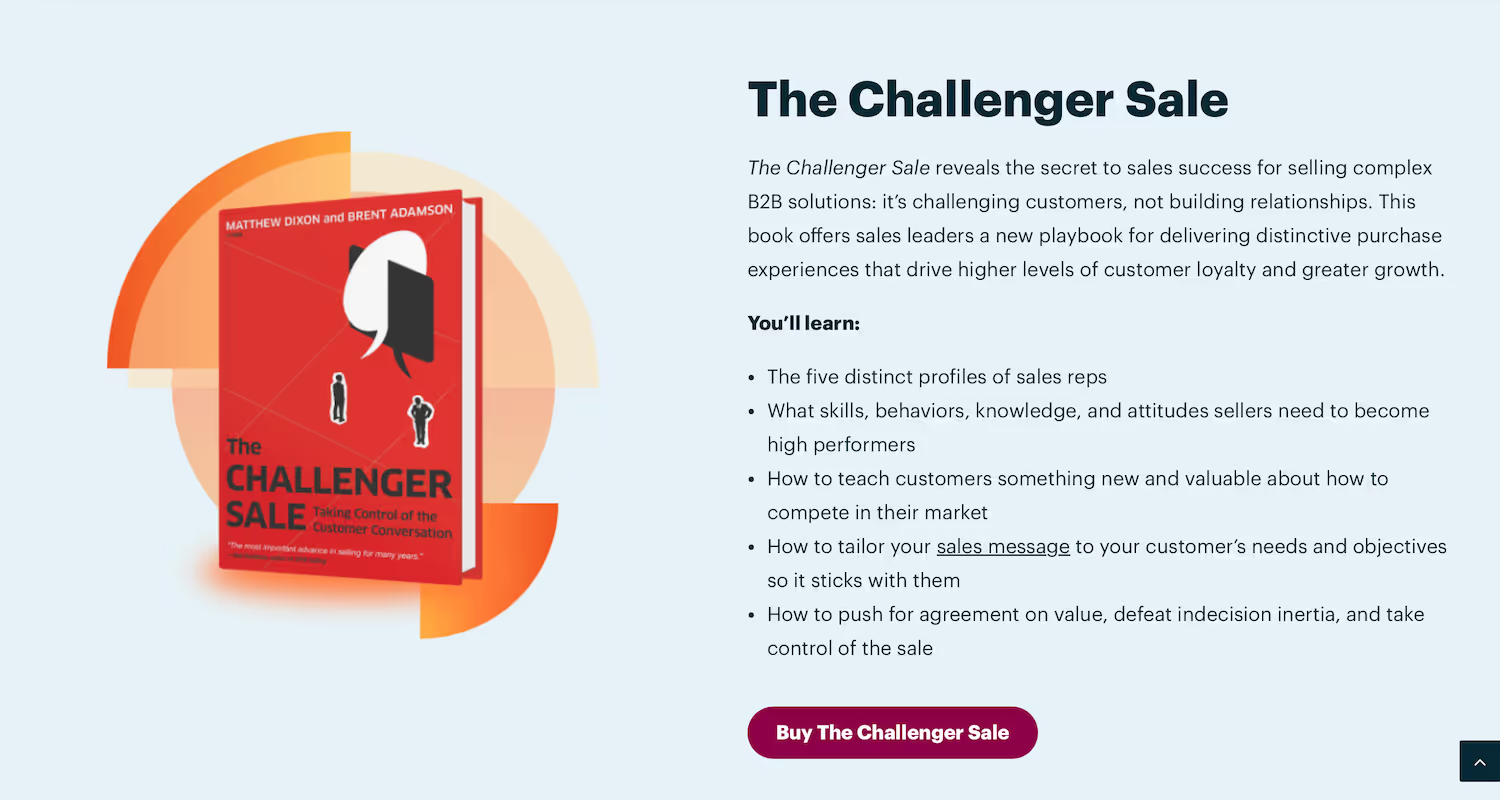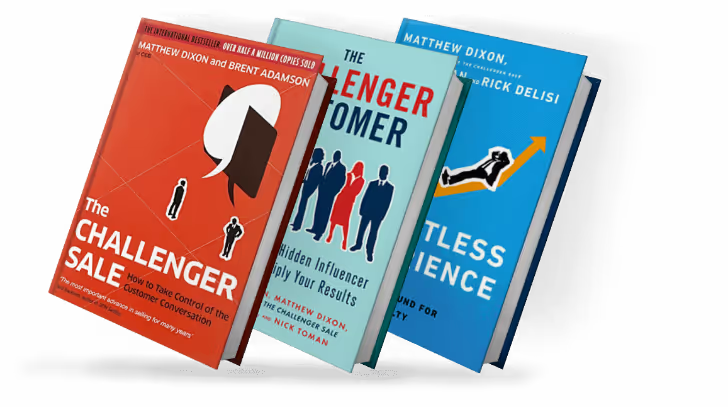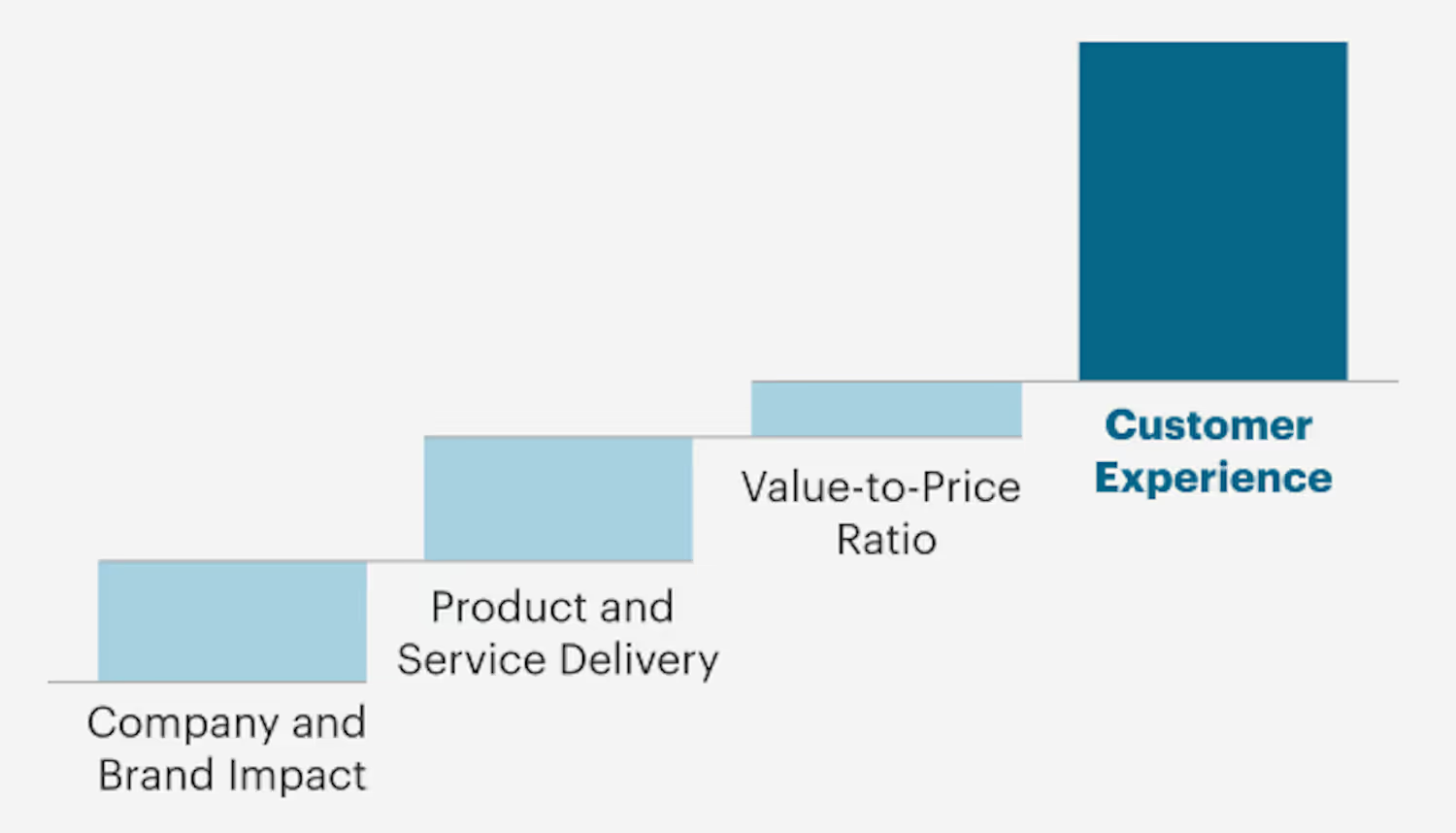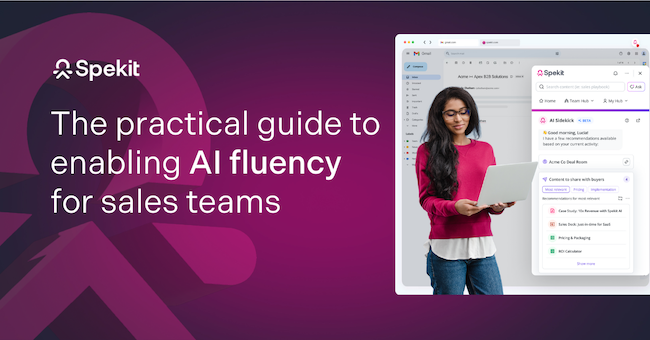By the time the average prospect comes into contact with a sales rep, they’re long past the research phase of the buying journey—which probably explains why 58% of sales meetings aren’t helpful to buyers. Selling today requires more of a value selling approach, where reps focus less on the “what” of their product and more on the “why.”
Armed with a mountain of research, prospects now go into sales conversations thinking they already know everything. As a result, reps have to take charge of the sales process and disrupt these notions to move them through the pipeline—and no sales methodology helps reps accomplish this more effectively than the Challenger Sales model.
Using the Challenger Sales model, reps make the sale by challenging a prospect’s preconceptions about what they need and offering them new ways of looking at—and solving—their problems.
Read on to learn more about the Challenger Sales model, its benefits, and how to use and implement it for your business.
What is the Challenger Sales Model?

The Challenger Sales model skips the traditional sales move of listing all the benefits a product or service can offer and focuses on the prospect’s pain points instead. The process involves defining a problem unique to the prospect, then presenting a thoughtful, well-researched perspective on why their solution is the answer to that problem.
Challengers not only have an expert-level understanding of their own products and services, but take the time to master each prospect’s perspective, pain points, and industry as a whole. This allows them to take charge of every sales conversation and meticulously guide prospects through the sales pipeline stages.
The Challenger Sales model is built around three core principles:
- Teaching: The sales rep provides insight into the prospect’s unique set of pain points.
- Tailoring: The sales rep tailors their solution to the prospect’s problems.
- Taking control: The sales rep challenges any objections by refocusing the customer on the benefits of their product or service.
The Challenger Sale motto: “Lead to your solution, not with your solution.”
What is a Challenger Sales Model Used For?
The Challenger Sales model is best suited for complex B2B sales processes, especially those that involve dealing with multiple decision-makers. This is because today’s B2B buyers spend 27% of their time researching independently online, and only 17% of their time meeting with sales reps.
By the time they start interacting with your sales team, they already have preconceived ideas of what they want and how much they’re willing to pay. They’re not interested in being told about your product’s features and benefits—they already know this from their own research. Prospects no longer want to know what they should buy, but why they should buy.
The Challenger Sales model embraces this and meets prospects where they are. Armed with a deep understanding of both the customer’s business and the product they’re selling, Challengers use this next-level knowledge to skillfully take control of the sale.
How? By proactively challenging the customer’s assumptions, providing fresh insights and angles they might not have considered, and guiding them to the most effective solutions available to them—all while navigating objections and pushback assertively, but not to the point of being pushy.
History of the “Challenger Sale”

The Challenger Sales model is the brainchild of authors Matthew Dixon and Brent Adamson, who first laid out the approach in their 2010 book The Challenger Sale: How to Take Control of the Customer Conversation.
The duo started their research during the Great Recession, a time when client retention became more important than ever. They wanted to nail down which factors compelled customers to stick around or churn, and discovered that customer loyalty came down to the quality of the sales experience. More specifically, how the rep guided them to a purchase decision.
Their research revealed five distinct seller profiles, with one profile outperforming the rest despite a difficult economy—the Challenger. But why, exactly?
Customers are already halfway through the buying journey before connecting with a seller, and as a result, think they already know everything there is to know about how your product can solve their problems. Challenger reps make it their job to prove them wrong.
The authors discovered that Challenger reps were so successful because of how skilled they were at disrupting a prospect’s current way of thinking—say, by sharing surprising data they didn’t know about or offering a fresh take on their most challenging pain point.
This makes the prospect realize they’re not as well-informed as they originally thought and positions your rep as the expert, opening the buyer up to new pathways forward—one that ultimately leads to your rep closing the deal.

The Challenger Sales model may have come out in 2010, but the journey didn’t stop there. Following the book’s phenomenal success, Dixon and Adamson put out three more books that build upon the original Challenger Sale methodology: The Effortless Experience (2013), The Challenger Customer (2015), and The JOLT Effect (2022).
Given today’s uncertain economic climate and complex buying processes, the Challenger Sales model couldn’t be more relevant to navigating the tricky world of B2B sales.
Types of Sales Professionals in the Challenger Sales Model
The Challenger Sales model suggests that most B2B sales reps fall into one of five distinct profiles. These archetypes are based on the attitudes and behaviors the sales reps use to interact with customers and close deals.
Let’s break down each type of sales professional, as per the Challenger Sales model.
Lone Wolf
The lone wolf sales rep is considered fiercely independent and self-driven—in other words, not a team player. They typically ignore established sales processes and techniques and favor their own methods. Lone wolves tend to resist guidance and coaching, and their refusal to comply with company protocol can make them frustrating to work with.
Despite their lack of interpersonal skills, they’re high performers and are known for hitting and exceeding quotas. In return, co-workers and managers alike tolerate their behavior.
Hard Worker
Hard workers are best known for always going the extra mile to make a sale. They’re self-motivated, proactive, and don’t need a lot of direction from their manager. They don’t give up on deals easily and relentlessly seek out feedback for personal development.
However, hard workers can sometimes be too strict towards work processes and may struggle to face complex sales scenarios in need of more strategic thinking.
Relationship Builder
The priority for relationship builder reps is building genuine, strong bonds with prospects and customers. They focus on establishing an emotional connection with leads and will dedicate as much time as necessary to build trust and generate customer loyalty.
Because relationships take time to build, this type of rep risks wasting significant amounts of time cultivating the wrong relationships and focusing too much on weak prospects that ultimately won’t become buyers. They also might find interactions that require a more assertive approach difficult.
Problem Solver
Problem solvers are detail-oriented and pay close attention to the prospect’s pain points in order to find the best solutions. They’re skilled at distilling complex problems and identifying fixes, even after the deal closes.
While this is great for boosting customer retention and loyalty, problem solvers are prone to spending too much time on current customers’ concerns (even though that’s what call center training is for), and not enough on generating new sales.
The Challenger
Challenger sales reps understand the intricacies of what their company does and are deeply knowledgeable about their customer’s business goals, pain points, and biggest obstacles. So much so, they’re able to take control of the conversation, challenge buyers’ mindsets, and push prospects out of their comfort zone.
Because they take the time to become as familiar with the inner workings of their prospects’ companies as they do their own, Challengers thrive in complex sales environments.
A B2B buying journey, for instance, can involve up to 10 decision makers, each with their own vantage point and priorities—challengers thoughtfully steer each decision maker toward new ways of thinking about their problems, then position their company’s product as the no-brainer solution to seal the deal.
Benefits of the Challenger Sales Model

So how might adopting the Challenger Sales model level up your company’s sales processes? These are the key benefits of making the Challenger Sales model your go-to methodology:
- It’s about teaching, not selling. The Challenger Sale method focuses on educating prospects on solutions to their problems they may not have considered, helping to build credibility and position reps as trusted advisors.
- It’s primed for shortening sales cycles. The methodology focuses on direct and insightful interactions that address and solve each customer’s precise pain points, saving time and resources normally spent on relationship-building.
- It’s especially effective for complex sales. The Challenger Sale method allows reps to take control of B2B sales conversations and efficiently guide the stakeholders involved to a decision.
- It’s the foundation for future sales opportunities. Being that Challengers take a value-based approach to every interaction, this opens the door for additional revenue streams, such as cross-selling and upselling.
- It’s a structured training framework. The Challenger Sale method provides reps with clear, precise steps to follow, which double as guideposts that can be monitored for ongoing sales enablement, training, and coaching opportunities.
Nearly 40% of star performers primarily use the Challenger Sales model—and in complex sales situations, that number rises to over 50%.
How To Use and Implement the Challenger Sales Model

Once you’ve decided the Challenger Sales model is a good fit for your company, the next step is to get your reps acclimated to the methodology. The best platform to use for this process is Spekit, an AI-powered just-in-time sales enablement platform that offers reps centralized and contextual sales training directly in the flow of work.
Making a Challenger Sale requires following a strategic five-step process. Here’s what each step of the Challenger Sale process involves—and how Spekit can help you implement them.
1. Start Your Warm-up
The first step of the Challenger Sale process is to prove you fully and clearly understand your prospect’s challenges and pain points. This involves deep research into their business and industry so that you can deliver relevant and meaningful insights during your conversations.
Now isn’t the time to mention your product at all—this step is all about your prospect’s needs and showing them that you not only empathize, but are familiar with what they’re dealing with. These initial conversations are about getting your prospects to open up, and will pave the way for selling further down the line.
As you collect this information, you can use Spekit AI to instantly generate baseline content for playbooks, sales scripts, and more, that surface across every sales touchpoint. You can also make real-time updates to your playbooks as your strategy evolves so reps are always using top-of-the-line intel.
2. Reframe The Conversation
Once you’ve uncovered your prospect’s biggest pain point during the warmup (say, trouble landing customers or deciding on a revenue enablement strategy), the next step is to identify the root cause of their problem and reframe it as an opportunity for growth.
To do this, discuss your prospect’s preferred approach for solving their problem and confidently-yet-tactfully explain why it’s unlikely to work, then offer up unique angles and alternatives they’ve yet to consider. You’re not in selling mode yet—this step is strictly about upending your prospect’s misconceptions and challenging them to reconsider their beliefs on how to solve the problem.
With the help of Spekit AI’s suggested themes feature, reps can flow through these conversations with ease, knowing the content needed to support their prospect’s specific use case is never more than a click away.
3. Try Rational Drowning
The rational drowning phase of a Challenger Sale builds on the work you did to reframe the conversation and open your prospect up to new ideas. This step involves walking the talk with numbers—quantitative data that illustrates the cost of letting their pain points fester.
The goal is to create a sense of urgency, and a real business case for adopting your suggested solutions rather than keeping things as they are. Spekit has your back here too, delivering real-time sales plays for high-value accounts, target industries, personas, and more in the moment of need.
4. Follow-Up With Emotional Impact
Even in B2B sales, emotion plays a key role in closing deals. Up to 95% of our decision-making is subconscious and usually driven by an emotional response. The more a product resonates with your prospect, the more likely they are to buy it.
Now that your prospect recognizes the business case for implementing your solutions, as highlighted by the data you shared, it’s time to create an emotional impact. The best way to do this? Share case studies and stories of other customer’s problems that were solved using the solutions you’re recommending.
Spekit AI can help to ensure the stories and anecdotes you share strike the right emotional chord. The sales enablement tool analyzes the context of meeting transcripts, emails, and more to automatically surface relevant AI content recommendations based on who you’re prospecting and what they care about.
As a result, the prospect starts to relate to these success stories, picturing themselves in the same position one day and associating positive feelings with the solutions that will get them there. Do it right, and it’ll be impossible for them to go down their original path.
5. Introduce Your New Solution
By this point, you’ve taken the prospect’s pain points, reframed them, and offered up unique solutions to solve them. You’ve also earned their trust, thanks to the time you’ve taken to master their industry as if it were your own. All that’s left is to introduce your product as the answer to their problems.
This step involves guiding your prospect through how the solution might look in action, then showcasing your product as the best one to make it happen. Because they’re already visualizing the positive future their company can have thanks to your solution, the path to your prospect requesting a demo or additional information should be a natural one.
To time your follow-ups just right, Spekit’s SmartSend feature allows reps to generate unique, trackable share links and receive instant alerts when buyers engage with the content—right down to who’s viewing it, when, and for how long.
Turn Your Sales Reps into Challengers with Spekit
Just because the Challenger Sales model is best for complex B2B sales doesn’t mean the process of implementing it has to be. With Spekit, you can turn any seller into a Challenger—and in a fraction of the time.
Spekit offers centralized and contextual training directly in the flow of work so reps won’t have to drop everything to learn the new methodology. Guide them step-by-step through the Challenger Sales model for the first time with in-app guidance, and follow-up with ongoing training and coaching to reinforce learning.
Meanwhile, use Spekit AI to deliver AI-powered content recommendations (sales enablement, collateral, and guidance) to reps in real-time, right where they’re working. Ensure the exact information they need to challenge their latest prospect is only a click or hover away.
You can even measure and optimize rep knowledge and performance with Spekit’s analytics. Understand their learning behaviors and how they apply training content to their day-to-day tasks, find and fill knowledge gaps, and identify common behaviors in top performers that can be adopted by your entire team. Challenge accepted?

.avif)





